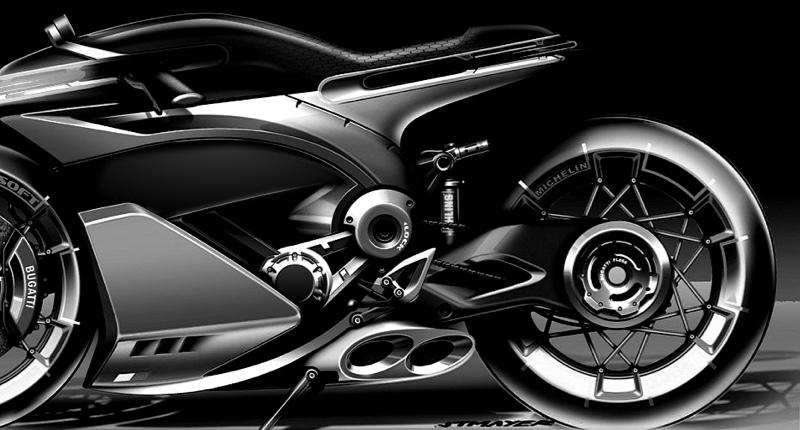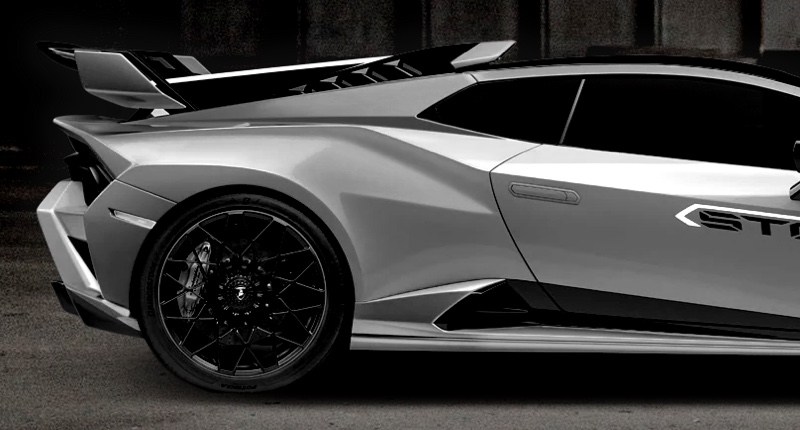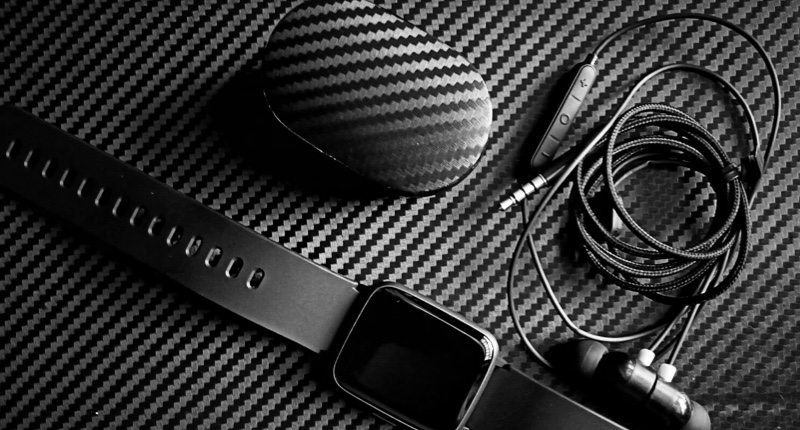Common Mistakes When Ordering Custom Carbon Parts — What to Avoid
- Introduction: Why getting custom carbon parts right matters
- Understanding custom carbon parts and their value
- Common mistake 1: Incorrect or inconsistent measurements
- Why it happens
- How to avoid it
- Common mistake 2: Choosing the wrong material, weave, or resin system
- Why it happens
- How to avoid it
- Common mistake 3: Ignoring manufacturing constraints and tolerances
- Why it happens
- How to avoid it
- Common mistake 4: Overlooking surface finish and clearcoat requirements
- Why it happens
- How to avoid it
- Common mistake 5: Underestimating lead times and tooling costs
- Why it happens
- How to avoid it
- Common mistake 6: Selecting suppliers without verifying capabilities
- Why it happens
- How to avoid it
- Common mistake 7: Poor technical communication and incomplete specifications
- Why it happens
- How to avoid it
- Common mistake 8: Neglecting testing, validation, and certifications
- Why it happens
- How to avoid it
- Process comparison: common manufacturing routes and trade-offs
- Checklist: How to order custom carbon parts without costly mistakes
- How Supreem Carbon helps you avoid these mistakes
- Conclusion: Reduce risk, improve fitment, and protect value
- Frequently asked questions
- References and sources
Introduction: Why getting custom carbon parts right matters
Ordering custom carbon parts for automobiles or motorcycles is an investment in performance, aesthetics, and longevity. Common Mistakes When Ordering Custom Carbon Parts can turn that investment into delays, higher costs, or parts that don’t fit or perform as expected. This guide from Supreem Carbon, a specialist in carbon fiber composites since 2017, explains typical pitfalls, the technical and commercial consequences, and practical solutions to ensure a smooth custom-order experience.
Understanding custom carbon parts and their value
Custom carbon parts combine lightweight strength with visual appeal. They are produced using different processes (prepreg/autoclave, vacuum-bag wet layup, RTM, or forged carbon) each with trade-offs in cost, strength, and finish. As a manufacturer with more than 500 custom items, Supreem Carbon recommends matching the manufacturing method to functional requirements to avoid specification mismatches when ordering custom carbon parts.
Common mistake 1: Incorrect or inconsistent measurements
Why it happens
Measurements taken from photos, loosely sketched dimensions, or mismatched reference points lead to poor fitment. Customers often assume “standard” fitment where none exists, especially for one-off parts or limited-run accessories.
How to avoid it
Provide CAD files or detailed measured drawings with tolerances. If you can’t supply CAD, request a digital scan or have the supplier 3D-scan the vehicle or part. Clear dimensional references and fitment points save iterations and tooling rework—reducing cost and lead time.
Common mistake 2: Choosing the wrong material, weave, or resin system
Why it happens
Buyers sometimes request a specific weave pattern for looks without understanding structural implications (e.g., 2x2 twill vs. plain weave) or fail to specify resin type (automotive-grade UV-resistant vs. general epoxy). That can affect durability, finish, and suitability for exterior automotive use.
How to avoid it
Discuss functional goals (stiffness, impact resistance, weight target, UV exposure) with the manufacturer. For exterior panels choose UV-stable gelcoats or clearcoats. For structural components, prioritize prepreg/autoclave materials and specify resin systems with documented mechanical properties.
Common mistake 3: Ignoring manufacturing constraints and tolerances
Why it happens
Designs that look good in CAD may be impossible or cost-prohibitive to manufacture—sharp internal radii, extreme complexity, or unrealistic tolerances can force redesigns or extra tooling.
How to avoid it
Ask suppliers about manufacturability early. Use DFM (design for manufacturing) reviews and accept realistic tolerances. Supreem Carbon’s R&D and tooling experience helps identify design adjustments that retain aesthetics while lowering cost and avoiding repeated molds.
Common mistake 4: Overlooking surface finish and clearcoat requirements
Why it happens
Customers often assume a glossy, showroom-ready finish is standard. Different processes yield different surface qualities: prepreg/autoclave typically provides superior finishes while wet layup may require finishing and hot-coating to achieve the same gloss.
How to avoid it
Specify finish level (raw carbon, brushed, clearcoated, painted) and confirm whether additional post-processing (sanding, clear coating, polishing) is included. Get finish samples or photos from the supplier to align expectations.
Common mistake 5: Underestimating lead times and tooling costs
Why it happens
Custom carbon parts often require bespoke tooling and multiple production stages. Buyers new to the process may expect quick turnarounds or underestimate the upfront costs of molds, jigs, or prototype iterations.
How to avoid it
Request a timeline that separates tooling, prototyping, approval, and production. Budget for prototype iterations (usually 1–2 prototypes) and expect tooling lead times of several weeks to a few months depending on complexity and finish. Supreem Carbon’s typical tooling timelines are provided during RFQ to avoid surprises.
Common mistake 6: Selecting suppliers without verifying capabilities
Why it happens
Price is often the dominant selection factor, but low-cost suppliers may lack quality control, certifications, or post-processing capabilities. That can lead to inconsistent mechanical properties and poor finishes.
How to avoid it
Verify manufacturing capacity, QC processes, and personnel skills. Ask for past work photos, material certificates, and sample approvals. Supreem Carbon operates a 4,500 m² factory with ~45 skilled staff and documented QC processes—key proof points buyers should request from any vendor.
Common mistake 7: Poor technical communication and incomplete specifications
Why it happens
Ambiguous language, missing tolerances, or lack of intended use can result in parts that meet stated dimensions but fail to meet real-world performance or fit requirements.
How to avoid it
Use a formal specification sheet that includes intended use, environmental exposure, mechanical targets, weight goals, finishing, and acceptance criteria for fit and finish. Schedule review calls and require sign-off on prototypes before moving to full production.
Common mistake 8: Neglecting testing, validation, and certifications
Why it happens
Some buyers skip impact testing, UV/durability testing, or load validation to save time. That increases warranty risk and potential safety issues for structural parts.
How to avoid it
Allocate budget and time for appropriate testing—static load tests, fatigue tests, and UV exposure tests where applicable. For vehicle components, consider compliance with relevant standards (OEM or industry-specific). Supreem Carbon supports testing protocols and can coordinate third-party validation when required.
Process comparison: common manufacturing routes and trade-offs
| Process | Typical Cost | Finish Quality | Strength/Consistency | Typical Lead Time |
|---|---|---|---|---|
| Prepreg + Autoclave | High | Excellent (minimal finishing) | Very high (consistent) | 4–12 weeks (depending on tooling) |
| Wet Layup + Vacuum Bag | Low–Medium | Good (requires finishing) | Medium (operator dependent) | 2–8 weeks |
| RTM / Infusion | Medium–High | Good–Very Good | High (good repeatability) | 6–12 weeks |
| Forged Carbon | Medium–High | Good (unique look) | Medium–High | 4–10 weeks |
Checklist: How to order custom carbon parts without costly mistakes
Follow this practical checklist before sending an order: 1) Provide CAD or 3D scan; 2) Specify material, weave, and resin requirements; 3) Agree on finish and clearcoat level; 4) Confirm tolerances and manufacturability; 5) Request timeline and tooling costs; 6) Ask for samples or prototypes and testing plans; 7) Verify supplier capabilities and QC processes; 8) Sign off on prototypes before production.
How Supreem Carbon helps you avoid these mistakes
As a manufacturer integrating R&D, design, production, and sales since 2017, Supreem Carbon focuses on clear technical communication, DFM feedback, sample approvals, and documented QC. With 4,500 m² factory space, 45 skilled staff, and over 500 custom parts produced, we guide customers through material selection, tooling decisions, and testing to reduce risks tied to Common Mistakes When Ordering Custom Carbon Parts.
Conclusion: Reduce risk, improve fitment, and protect value
Avoiding Common Mistakes When Ordering Custom Carbon Parts requires early technical alignment, realistic timelines, and verified supplier capabilities. By clarifying specifications, choosing the right manufacturing method, and validating prototypes, you can achieve high-quality, durable, and attractive carbon parts that meet performance needs. Use the checklist above and engage manufacturers with proven R&D and QC—like Supreem Carbon—to ensure a successful outcome.
Frequently asked questions
Q: How long does it typically take to produce a custom carbon fiber part from design to delivery?A: Typical timelines range from 4 to 12 weeks depending on tooling complexity and process (prepreg/autoclave often longer). Allow additional time for prototype approvals.
Q: What information should I provide to get an accurate quote?A: Provide CAD/3D files, target materials and finish, intended use (structural vs. cosmetic), expected production volume, and any testing or certification requirements.
Q: Is a glossy finish standard for carbon fiber parts?A: No. Glossy finished parts usually require clearcoating and polishing. Prepreg/autoclave parts can achieve higher-quality finishes with less post-processing than wet layup.
Q: Can I order a single prototype before committing to full production?A: Yes. Ordering a prototype is recommended to verify fit, finish, and function before tooling and full production.
Q: How do I know if a supplier’s carbon fiber is automotive-grade?A: Ask for material certificates (e.g., prepreg batch data), UV resistance data for resin systems, and examples of automotive applications they’ve supplied.
Q: What’s the difference between prepreg/autoclave and wet layup in performance?A: Prepreg/autoclave typically delivers better fiber-volume fraction, repeatability, and mechanical properties; wet layup is more cost-effective but more variable and often needs more finishing.
References and sources
- Grand View Research — Global Carbon Fiber Market reports (market size and growth estimates)
- CompositeWorld — Technical articles on manufacturing processes and finishing
- Industry white papers on prepreg vs. wet layup and RTM processes
- Supreem Carbon company data — factory size, staff, product range (internal company profile provided by client)
- Standards and technical guidance from composites industry organizations (e.g., SAMPE, local OEM guidelines on component testing)
Top carbon fiber motorcycle parts uk Manufacturers and Suppliers

The Ultimate Guide to Custom Carbon Fiber Tubes by Supreem Carbon

Rev Up Your Ride with Custom Carbon Fiber Motorcycle Wheels
Carbon Fiber Manufacturing: Your Guide
For Facotry
How many monthly production capacity of the factory?
The average monthly production capacity reach 3000 pieces. With the equipment upgrade, it will be increased over 4000 pieces per month.
For Customized Service
How long does the customized products order take?
This depends on the complexity and mold production cycle of the product. The first sample will be ready in 2-3 weeks after mold finished.
For Products
Which surface could you provide for the carbon parts?
Gloss finish, matte finish, satin finish. Some color coating as the customer needs.
Supreem Carbon parts produce by 100% carbon?
Yes,all products are made from full carbon with dry carbon.
For After-sales Service
What can I do if the carbon fiber products arrived is broken?
Please give us feedback as soon as possible and we will send new one to you.

Yamaha R1 Carbon Fiber Side Fairings
Introducing the Supreem Carbon Fiber Long Side Panels for Yamaha R1. Crafted with precision and expertise, this front side fairing is designed to elevate the performance and aesthetics of your R1. Made from high-quality carbon fiber, this fairing is not only lightweight but also incredibly durable, providing optimal protection for your motorcycle.

Yamaha R1 Carbon Fiber Airbox Tank Cover
The Supreem Carbon Yamaha R1 Carbon Fiber Airbox Tank Cover provides lightweight, durable protection with a sleek finish. Designed for R1 models, it enhances the style and performance of your bike. Its lightweight structure improves performance while maintaining the premium aesthetics necessary for high-end modification projects. As a dedicated manufacturer of carbon fiber parts, we provide stable production capacity, customization options, and strict quality control to support enterprise-level procurement and OEM/ODM needs.

Carbon Fiber Rear Seat Panel for BMW S1000R & M1000RR – Lightweight Performance
This carbon fiber rear seat panel is engineered for the BMW S1000R and M1000RR, offering superior rigidity, reduced weight, and a premium racing finish. Produced with autoclave technology and strict QC standards, the part ensures consistent OEM-level fitment. Supreem Carbon provides wholesale supply, stable bulk production, and customized solutions for global clients.

High-Performance Carbon Fiber Rear Undertail for BMW S1000R
Engineered for distributors, tuning brands, and motorcycle accessory businesses, the BMW S1000R Carbon Fiber Rear Undertail is a high-quality, durable, lightweight carbon fiber upgrade for the S1000R platform. This component is manufactured using aerospace-grade carbon fiber and precision molds to deliver superior stiffness, a seamless OEM-level fit, and a premium visual finish suitable for high-end aftermarket applications.
© 2024 Supreem Carbon All Rights Reserved.





Facebook
Pinterest
LinkedIn
Instagram